
Rent / Buy
Rent / Buy
Trailer
Synopsis
Structurally, the season retread season 18's formula of including a trilogy of stories bound together by an overarching theme. In this instance, the tripartite tale involved Turlough's attempts to kill the Doctor at the behest of the Black Guardian.
Episode 22 : The King's Demons (2)
March. 16,1983

England, 1215. With the historic signing of the Magna Carta supposedly only days away, the Doctor is startled to find King John apparently intent on provoking civil war - and seemingly in two places at once...
Episode 21 : The King's Demons (1)
March. 15,1983

In 1215 at the castle of Ranulf Fitzwilliam, son Hugh is jousting on a matter of honor against Sir Gillis Estram, the champion of King John, when the TARDIS appears. The Doctor, Turlough and Tegan are immediately hailed as demons and welcomed warmly by the King. Something is wrong with this picture, observes the Doctor.
Episode 20 : Enlightenment (4)
March. 09,1983

Tegan isn't aware she been outfitted with a device to destroy Captain Striker's ship. While the detonation will merely slip the indestructible Eternals back into the realm of eternity, nothing nearly so elegant or as tidy awaits the Ephemerals aboard the ship.
Episode 19 : Enlightenment (3)
March. 08,1983

Turlough's panic puts him aboard a pirate ship where Captain Wrack uses his presence to invite all the other captains over for dinner. She's been picking off a few of her greatest rivals in the race and now sees an opportunity to clear the field once and for all and become the clear winner.
Episode 18 : Enlightenment (2)
March. 02,1983
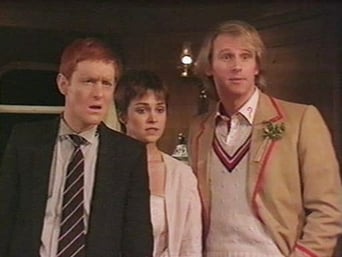
Captain Striker and his officers reveal themselves to be Eternals, mind-reading creatures who live outside of time and who require Ephemerals (humans and other "time dwellers") to relieve them of their emptiness. They race against other Eternals for the grand prize of Enlightenment, by which to grant their deepest wishes. That can't be good for the universe, but how can the Doctor strategise against beings adept at reading his every thought?
Episode 17 : Enlightenment (1)
March. 01,1983

After receiving a warning from the White Guardian, the Doctor initially believes the TARDIS has landed aboard an Edwardian clipper ship - but all is not as it seems. While the time travellers are caught up in the omnipotent Eternals' race for the ultimate prize, the Black Guardian's scheme to destroy the Doctor enters the end-game - but which side is Turlough a pawn of?
Episode 16 : Terminus (4)
February. 23,1983

In attempting to reopen a doorway into the TARDIS, Turlough activates Terminus' automated fuel-jettisoning sequence. The first time this sequence was engaged, it flung its first of two massive loads of unstable fuel into the distant past, producing the Big Bang that created the universe. This second sequence - if the Doctor can't find a way to shut it down - will release a second massive load, the explosion of which will entirely negate the effects of the first.
Episode 15 : Terminus (3)
February. 22,1983

Since the Doctor's party represents neither lazars nor handlers, they're presumed to be investigators, which is enough to spark the disgruntled Valgard into challenging Eirak over leadership of the handlers. Meanwhile, as the giant, dog-like Garm takes a terrified Nyssa off for "treatment," Bor returns from the forbidden zone with interesting news about the ship.
Episode 14 : Terminus (2)
February. 16,1983

The Doctor's party remains divided and scattered as the immense transport docks at the Terminus space station, which turns out to be a leper colony at the exact centre of the known universe. As they find their way around and investigate, Nyssa shows signs of contracting the disease.
Episode 13 : Terminus (1)
February. 15,1983

Deep space, some time in the future. Still following the Black Guardian's orders, Turlough sabotages the TARDIS, forcing an emergency fusion with an apparently deserted starship. But the ship is headed for the notorious plague colony, Terminus. Surrounded by plague victims and space pirates, is the Doctor too preoccupied to notice the greatest threat of all - a threat connected to the position of Terminus at the exact centre of the universe?
Episode 12 : Mawdryn Undead (4)
February. 09,1983
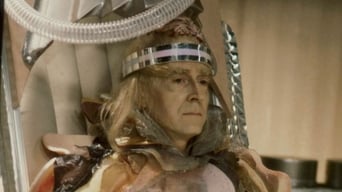
As the Doctor's ethics are challenged and the two Brigadiers finally meet, Turlough plots with the Black Guardian to bring the Time Lord down once and for all...
Episode 11 : Mawdryn Undead (3)
February. 08,1983

Mawdryn and his eternal mutants reveal the truth: they are exiles, they are in pain and need the Doctor's future 'lives', as afforded by each of his remaining regenerations.
Episode 10 : Mawdryn Undead (2)
February. 02,1983
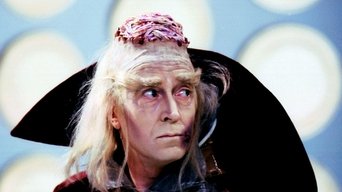
The TARDIS lands on Earth six years out of date, stranding the Doctor in 1983 while leaving Tegan and Nyssa to look for him in 1977. Both parties also encounter former companion, Brigadier Lethbridge-Stewart, though curiously, he has no memory of the Doctor at all.
Episode 9 : Mawdryn Undead (1)
February. 01,1983
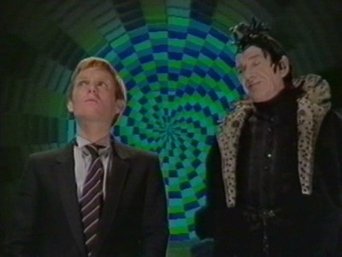
The Doctor discovers a starship trapped in a time warp over Earth. Meanwhile, public schoolboy - and secret alien émigré, Turlough, learns he can have that which he most desires, in return for the murder of the Doctor...
Episode 8 : Snakedance (4)
January. 26,1983
Episode 7 : Snakedance (3)
January. 25,1983
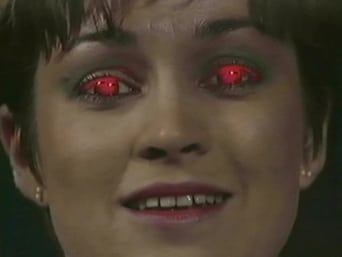
The possessed Tegan and Lon try to find the whereabouts of the Great Crystal. The Doctor finds himself in prison, with only Nyssa to try and get him out. Chela tells the Doctor tales of Dojjen.
Episode 6 : Snakedance (2)
January. 19,1983
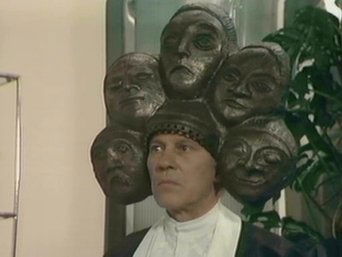
The Doctor talks to Ambril and Chela to try and stop the 500th anniversary celebrations. A possessed Tegan finds herself in Dugdale's Hall of Mirrors to where she summons Lon. The Doctor and Nyssa return to the caves.
Episode 5 : Snakedance (1)
January. 18,1983

Tegan steers the TARDIS to the planet Manussa, without meaning to - but why? And is it a coincidence that the planet is about to celebrate the 500th anniversary of the expulsion of the insidious Mara?
Episode 4 : Arc of Infinity (4)
January. 12,1983

The High Council creates a distraction so the Doctor and Nyssa can find Omega on Earth and prevent his reentry into our universe.
Episode 3 : Arc of Infinity (3)
January. 11,1983

Something seemed amiss about the Doctor's execution, so the Castellan has Commander Maxil discreetly but fully look it. Meanwhile, as the Doctor meets the anti-matter being inside the Time Lord Matrix, Tegan and her cousin's friend run afoul of a bird-like alien back on Earth.
Episode 2 : Arc of Infinity (2)
January. 05,1983

With an anti-matter being trying to enter the universe through the Doctor, risking the destruction of everything, there is only one clear course of action for the High Council of Time Lords to take: execute the Doctor. Meanwhile, Tegan arrives in Amsterdam and hears about what's become of her cousin from his unscathed friend.
Episode 1 : Arc of Infinity (1)
January. 03,1983

On Gallifrey, someone on the high council is perpetrating a treasonous act - transmitting the Doctor's bio-extract from the space/time matrix to an anti-matter being. On Earth, two English lads spend their last night in Amsterdam sleeping in a crypt where they're attacked by an alien creature under the same anti-matter being's control.
Seasons
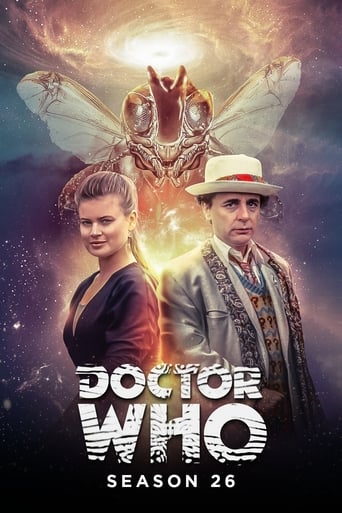
Season 26
It was the final season of the "classic" series. Unusually for a Doctor Who season, aside from some scenes in Survival, all the stories took place on Earth. Apart from Battlefield, the stories followed a loose character arc, as Ace came to terms with her past. As for the Doctor, he had become darker in personality, treating others as pawns in the battle between good and evil while dressing in dark clothes to match his personality change. This was the first and so far only season to be produced entirely out of broadcast order.

Season 25
As the silver anniversary season, it included several stories noting the milestone: Remembrance of the Daleks, which featured the final "classic series" appearance of the Daleks and Davros and which would feature scenes set at Coal Hill School and 76 Totter’s Lane, both significant locations in the first episode, An Unearthly Child; and Silver Nemesis, the final classic series appearance of the Cybermen, which had its first episode broadcast on the actual 25th anniversary of the series. It also showed the lighter side of the Seventh Doctor's personality fade and be replaced by darker qualities. The Greatest Show in the Galaxy was also the last episode to have the Doctor dressed in bright colours. This would also be the first season that would be recorded with the intention of, and be broadcast in, a stereo mix.
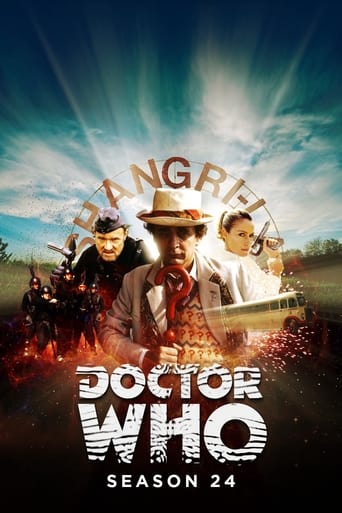
Season 24
Unlike season 23, there was no overall story arc, and the episode allotment - two four-episode stories, two three-episode stories - would be retained for the remainder of the original series. Notably, the season featured the introduction of new companion Ace, who would be a prominent figure in the spinoff fiction that kept the Doctor Who name alive following its cancellation in 1989 and was the final official onscreen companion until Rose Tyler in the revived series.

Season 23
This season had a unique format, never again repeated in the show. Doctor Who had returned to production after a near-cancellation and an eighteen-month production hiatus. For the first time, a season consisted of a single story, The Trial of a Time Lord, although this was made up of four serials from a production perspective: each serial was written by a different person (save for The Mysterious Planet and the first part of The Ultimate Foe, both of which were written by Robert Holmes) and featured a different story presented as evidence, excluding the final two episodes which concluded the ongoing story of the trial; the trial storyline itself acted as a framing device to bracket the first three serials. As a result, whether The Trial of a Time Lord should be considered one story or four has been intensely debated. This single-story format, sometimes referred to as a "miniseries", would later be utilised for the third and fourth series of Torchwood.

Season 22
With this season the BBC experimented with the format of the series, reducing the number of episodes to thirteen, but making each episode forty-five minutes long. The experiment did not result in improved ratings and at the end of the season the BBC announced it was cancelling the series; uproar from fans resulted in the BBC changing its mind and putting the series on an eighteen-month hiatus instead. This season is notable for featuring the final appearance of Patrick Troughton as the beloved Second Doctor, in a storyline that gave rise to a popular fan theory known as Season 6B.
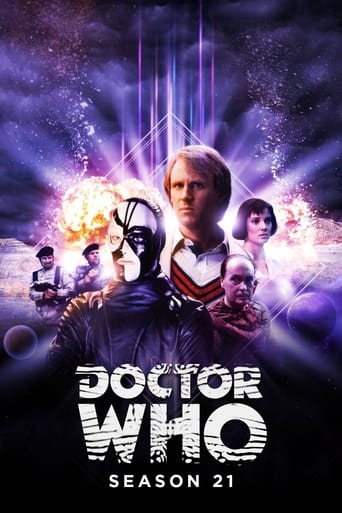
Season 21
The Twin Dilemma, the first story with Colin Baker as the Sixth Doctor, aired last in the season. This season saw the departure of companions Tegan, Turlough and Kamelion and introduced Peri. Most episodes were the traditional twenty-five minute length. However, due to coverage of the 1984 Winter Olympics, Resurrection of the Daleks was re-edited before airing and shown as two forty-five minute episodes.
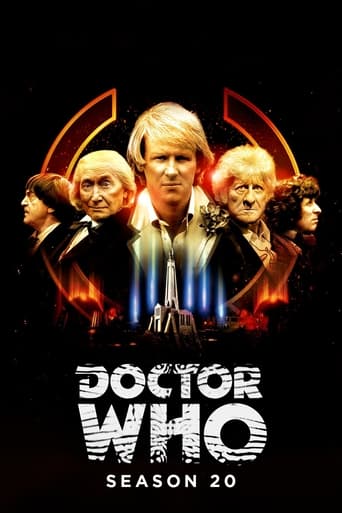
Season 20
Structurally, the season retread season 18's formula of including a trilogy of stories bound together by an overarching theme. In this instance, the tripartite tale involved Turlough's attempts to kill the Doctor at the behest of the Black Guardian.

Season 19
Two milestones occurred in Earthshock. Firstly, the Cybermen returned, unannounced, for the first time since Revenge of the Cybermen in 1975 with a completely different design, with David Banks' first appearance as Cyber-Leader, a role he would return to in subsequent stories involving the Cybermen until Silver Nemesis. Secondly, for the first time since The Daleks' Master Plan which had aired in 1965 and 1966, a companion died. Other milestones included Black Orchid, the first non-science fictional historical serial since 1966's The Highlanders, and the destruction of the Doctor's sonic screwdriver in The Visitation. A cliffhanger ending to the series appeared to have left Tegan stranded at Heathrow Airport with the Doctor abandoning her by mistake (the Doctor had spent most of the series trying to get Tegan back to Heathrow, which almost became a running theme).
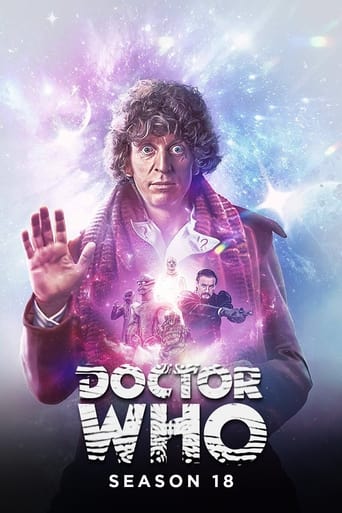
Season 18
The season featured a story arc involving E-Space and the return of the Master who had stolen a new body rather than regenerate. The stories were darker and more adult in tone than those during the Graham Williams era. They also attempted to emphasise science, much to the satisfaction of both script editor Christopher H. Bidmead and executive producer Barry Letts. Notably, this season revolves around the theme of entropy, linking together all of its stories in a rare phenomenon for the show (while other story arcs would be linked together via people, objects, etc, the use of an overarching theme for a season was unprecedented). This theme would eventually foreshadow and culminate in the Doctor's regeneration at the end of the season.
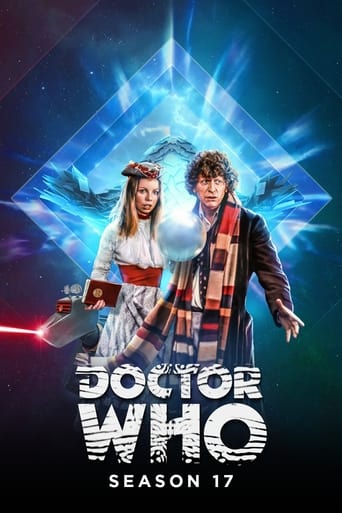
Season 17
It consisted of five stories, plus the incomplete Shada, unfinished as a result of an industrial strike. Lalla Ward joined as Romana II, and the season is notable for the involvement of Douglas Adams in the writing department. This was the last season to use the traditional Delia Derbyshire "Doctor Who theme" arrangement.
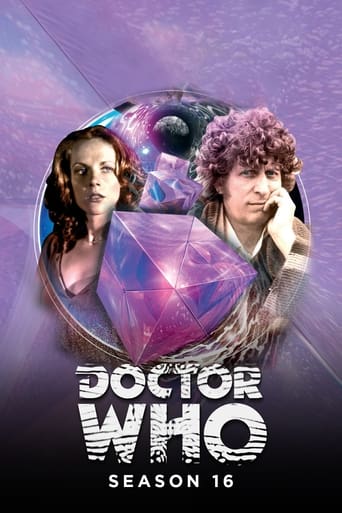
Season 16
This season saw the introduction of the Black and White Guardians as well as the companion Romana, who became only the second female Time Lord companion since Susan. This season is sometimes colloquially known as The Key to Time season after the story arc involving the Key to Time. Although not the first season to consist of linked stories (Season 8 in 1971 was the first, as all the stories that year featured the Master), it was the first to be recognised as having a series long arc. Although multi serial arcs would occur again, such a full- season experiment wouldn't be attempted again until Season 23. The arc has a number of similarities to the Season 1 story The Keys of Marinus. The storyline was originally proposed for Season 15, but it required more planning.

Season 15
This season introduced K9 to the series and saw the departure of Leela. It was originally intended to include Terrance Dicks' story The Vampire Mutations but, due to a major BBC production of Dracula, it was postponed. It later became Season 18's State of Decay. To replace it, Dicks quickly scripted the season opener, Horror of Fang Rock. The season took a two week transmission break over the 1977 Christmas period, between the broadcast of part four of The Sun Makers and part one of Underworld.
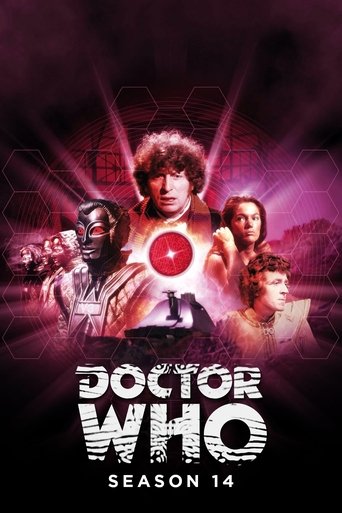
Season 14
The season is notable for the departure of Sarah Jane Smith in The Hand of Fear and for The Deadly Assassin, a story set entirely on Gallifrey which expounded greatly upon the culture and history of the Time Lords, and the Eye of Harmony and Rassilon are mentioned for the first time. The Deadly Assassin also featured the return of the Decayed Master in a degenerated form and had the Doctor without a companion for an entire story for the first time in the history of Doctor Who. This story is also the first time the limit of regenerations is set.
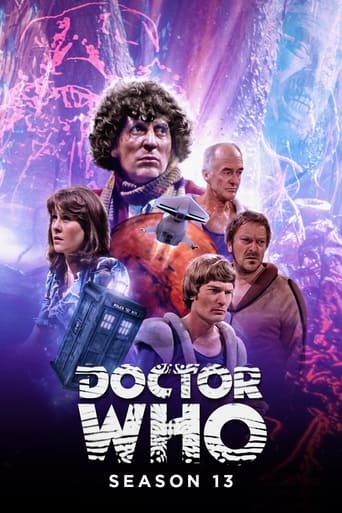
Season 13
It was during this season that the Doctor cut ties to UNIT (after Terror of the Zygons, the Brigadier would not appear again until Mawdryn Undead in 1983, and The Seeds of Doom marked the last occasion to date that the Doctor was explicitly said to be working for UNIT - as opposed to working with them as occasions warranted). Several of the serials in this season, particularly Pyramids of Mars and The Brain of Morbius, are among the best-known of the 1970s-era storylines. Though it was aired as a part of Season 13, Terror of the Zygons was actually filmed as part of the previous season; this holdover allowed the series to switch back to an autumn season start.
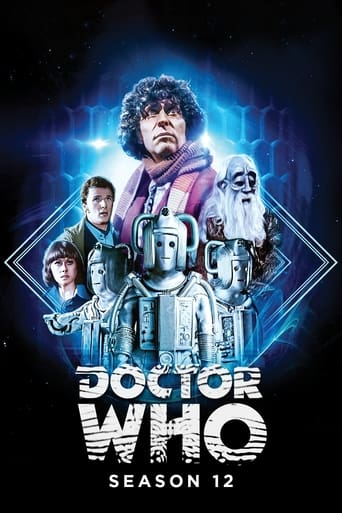
Season 12
All the stories in this season were interconnected, several forming a loose story arc relating to Space Station Nerva. The Cybermen returned to the series for the first time since The Invasion. Genesis of the Daleks, a story which introduced Davros and showed the creation of the Daleks, is one of the most famous of all Doctor Who serials.
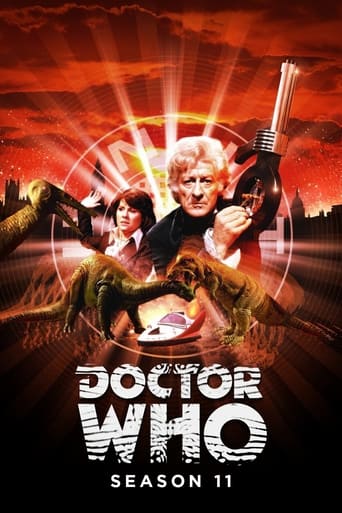
Season 11
It was Jon Pertwee's final season as the Doctor and included, very briefly, the first appearance of Tom Baker as the Fourth Doctor. The Time Warrior, the season opener, introduced Sarah Jane Smith, who was a frequently featured character in the Doctor Who universe decades after her departure in Season 14. The same story also, for the first time, named the Doctor's homeworld as Gallifrey. UNIT also began to be phased out of the series during this season.
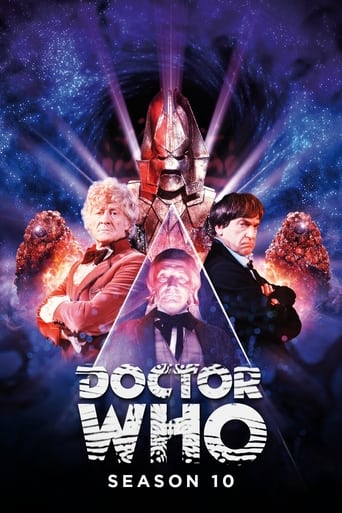
Season 10
William Hartnell returned in a cameo as the First Doctor and Patrick Troughton in a more substantial role as the Second Doctor in The Three Doctors. This story marked the end of the Doctor's exile on Earth, opening up the series to more off-world adventures and beginning a gradual reduction of UNIT-related stories.
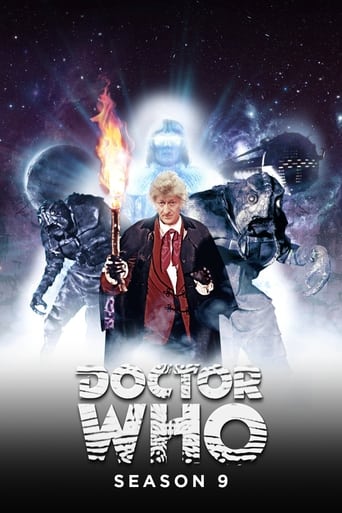
Season 9
It was noted for being the beginning of the end of the Doctor's exile on Earth, with the Doctor's TARDIS still under the control of the Time Lords (The Mutants) and restricted freedom (The Curse of Peladon and The Time Monster), as well as UNIT and the Master appearing less frequently in compared to the previous two series. As well as the return of the Daleks and the Ice Warriors, this series also introduced Alpha Centauri, Aggedor and the Silurians' aquatic cousins the Sea Devils.
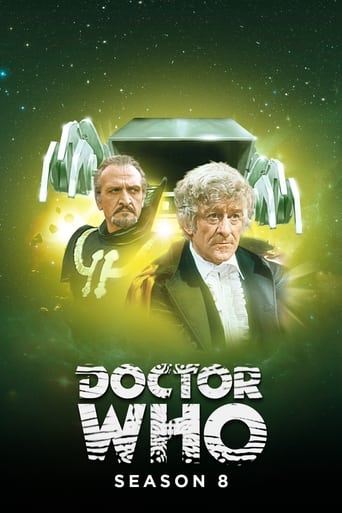
Season 8
As of 2017, season 8 remains notable for being the season with the most number of regular characters. Not only did it see a new companion in the form of Jo Grant, but it featured a regular enemy — The Master — who was the first regular Time Lord enemy of the Doctor to appear more than twice, and an expanded regular UNIT cast that now included Sergeant Benton and Mike Yates in most episodes. Adding in returning regulars Jon Pertwee and Nicholas Courtney, the regular cast swelled to six.
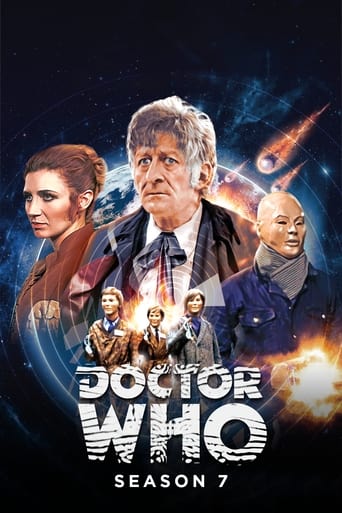
Season 7
It was the first series produced and broadcast in colour and the first set entirely in one time period and almost entirely on Earth (the latter of these factors would later be repeated for Season 26 and Series 1, although in those two cases there was no attempt at an in-universe explanation for confining the Doctor to the planet). Although the series did not have an overall story arc, it did feature a recurring subplot of the Doctor trying to adjust to life as an exile while trying to circumvent the restrictions placed upon him by the Time Lords, and began the process where the Doctor would try to gain more control over his TARDIS. Beginning with this series and continuing for the next few years, most storylines involve the Doctor working with UNIT.
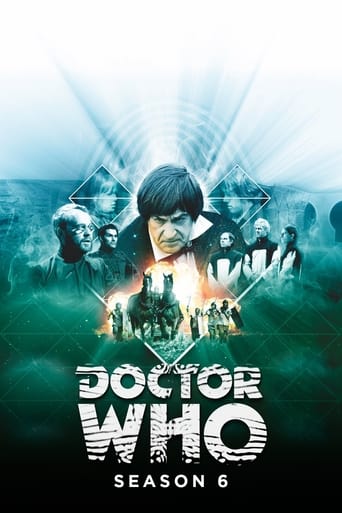
Season 6
This season featured the first ever UNIT story, The Invasion, which showcased the return of Brigadier Lethbridge-Stewart. It also featured the first official appearance of Time Lords and the as yet unnamed Doctor's home planet (another member of Susan and the Doctor's race, the Monk, had appeared previously, but without much elaboration and without using the term "Time Lord"). It also marked the tenure of Patrick Troughton as the Second Doctor. It consisted of seven serials and forty-four episodes, including two epic-length storylines: the eight episodes of The Invasion and the ten-episode The War Games.
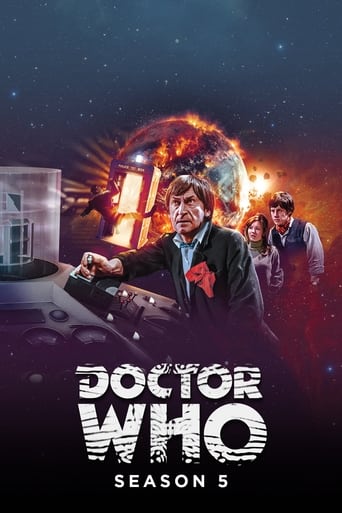
Season 5
No complete stories from the season were known to have survived until the early-1990s when archivists recovered a complete version of The Tomb of the Cybermen. A second complete story, The Enemy of the World was recovered in 2013, along with a nearly complete recovery of the story that followed it, The Web of Fear. The season is also notable for having Patrick Troughton play a double-role as both the Doctor and Salamander in The Enemy of the World.
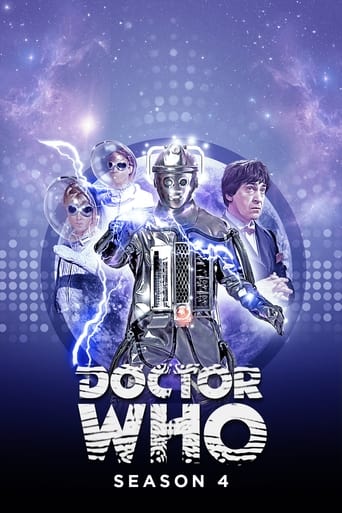
Season 4
This season was a season of major changes for Doctor Who, including some that have influenced the series and franchise ever since. Most notably, season 4 saw William Hartnell's First Doctor hand off the baton to Patrick Troughton's Second Doctor in the very first regeneration. When Hartnell announced his plans to leave the series, the show's writers came up with the idea of having the Doctor change his appearance and personality. In 1966, while it was not uncommon for actors to change in ongoing TV and film roles, this was possibly the first time a change in appearance was written into the very nature of the character.
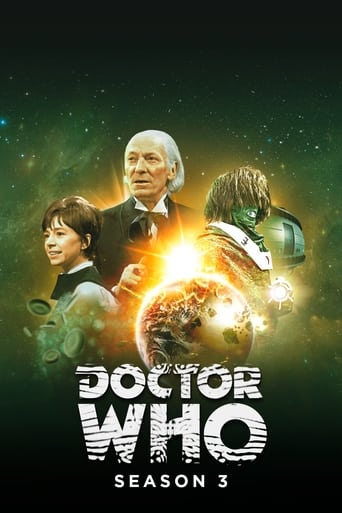
Season 3
At twelve episodes, The Daleks' Master Plan was the longest story in the show's history until superseded by the fourteen-episode The Trial of a Time Lord in 1986. The season also had the greatest number of different companions (seven) and producers (three). This was the longest season in the history of the franchise to date, at 45 episodes. It also featured the first appearance of actor Nicholas Courtney, although not in his most famous role as the Brigadier. The Daleks' Master Plan also saw the return of Peter Butterworth as the Monk, who became the second Doctor Who enemy to make a return (after the Daleks themselves) to the show. This was also the season of The War Machines, to date the only televised story in which the taboo of never referring to the Doctor directly by the name "Doctor Who" is broken, with the exception of Missy's teasing in World Enough and Time.
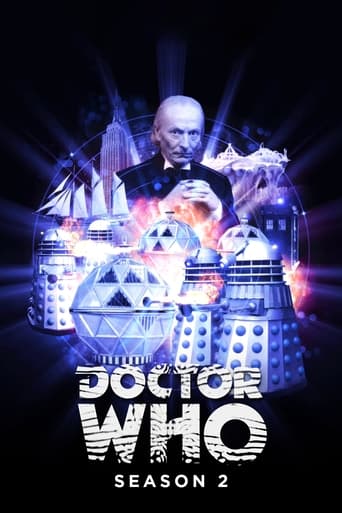
Season 2
Milestones this season included not one but two encore appearances by the Daleks; the departure of the original three companions, Susan Foreman, Barbara Wright and Ian Chesterton; and the first appearance of someone else from the Doctor and Susan's home planet, and the first Time Lord enemy to appear.
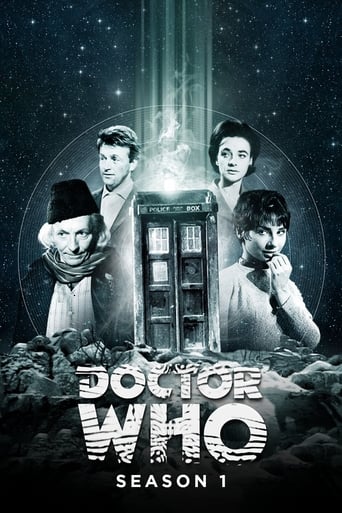
Season 1
The season introduces William Hartnell as the First Doctor, an alien who travels through time and space in his TARDIS, which appears to be a British police box on the outside. Carole Ann Ford is also introduced as the Doctor's granddaughter Susan Foreman, who acts as his companion alongside her schoolteachers Ian Chesterton and Barbara Wright, portrayed by William Russell and Jacqueline Hill, respectively. Throughout the season, the Doctor and his companions travel throughout history and into the future. Historical stories were intended to educate viewers about significant events in history, such as the Aztec civilisation and the French Revolution; futuristic episodes took a more subtle approach to educating viewers, such as the theme of pacifism with the Daleks.
Similar titles

First Wave
First Wave is a Canadian/American science fiction television series, filmed in Vancouver, British Columbia, Canada, that aired from 1998 to 2001 on the Sci-Fi Channel. The show was created by Chris Brancato, who co-wrote an early version of the script for the seminal X-Files episode "Eve". Francis Ford Coppola was executive producer on the show. In an unusual move, the Sci-Fi Channel picked up the series on a 66-episode contract. The show was subsequently canceled once the contract expired at the end of the third season due to disappointing ratings.
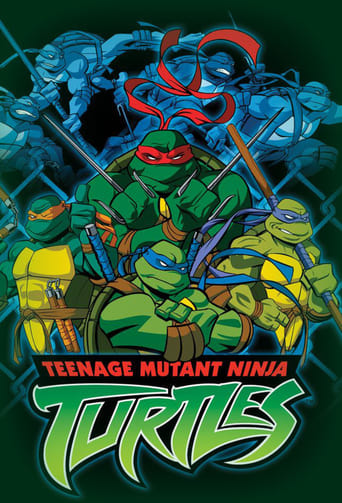
Paramount+
Teenage Mutant Ninja Turtles
Leonardo, Raphael, Michaelangelo and Donatello must save New York City from the evil crime lord Shredder and his assistant, Baxter Stockman. The Turtles must fight foot soldiers, mice, and gangs and get help from their sensei Splinter, her friend April O'Neil, and her partner Casey Jones in an action-packed new series.
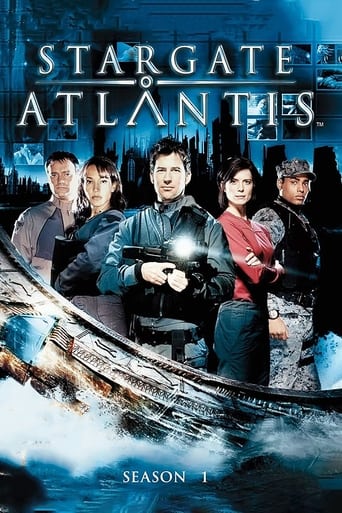
Prime Video
Stargate Atlantis
With the Ancients' city of Atlantis discovered in the Pegasus Galaxy by Stargate Command, Dr. Elizabeth Weir and Major Sheppard lead a scientific expedition to the ancient abandoned city. Once there, the team not only find themselves unable to contact Earth, but their explorations unexpectedly reawaken the Ancients' deadly enemies, The Wraith, who hunger for this new prey. Now with the help of newfound local allies like Teyla Emmagan, the Atlantis Team sets about to uncover their new home's secrets even as their war of survival against the Wraith begins.

Command Z
A scientist tasks his employees with a "historic" mission to travel back in time to revise history and save the world.
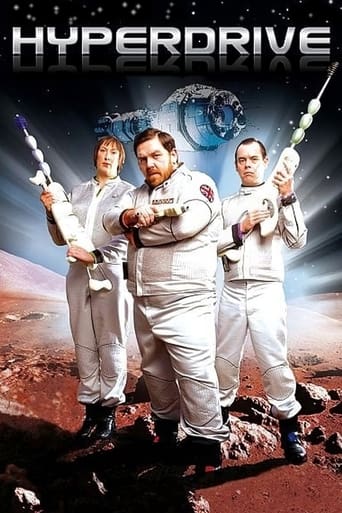
Prime Video
Hyperdrive
Set in 2151 and 2152, it follows the crew of HMS Camden Lock as they stumble through their heroic mission to protect British interests in a changing galaxy.
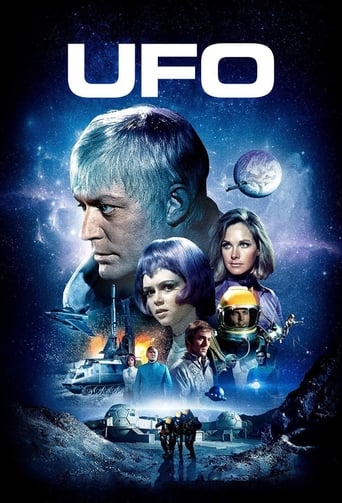
Freevee
UFO
A secret, high-technology international agency called SHADO defends Earth from alien invaders.

Disney+
Lilo & Stitch: The Series
This animated series chronicles the further adventures of renegade scientist Dr. Jumba Jookiba's beloved Experiment 626, who is now living happily as Lilo's alien buddy Stitch. Jumba’s remaining experiments have landed all over Hawaii in the form of dehydrated pods. Lilo and Stitch’s mission is to catch Stitch’s "cousins" before they fall into the clutches of the evil Dr. Jacques von Hamsterviel!
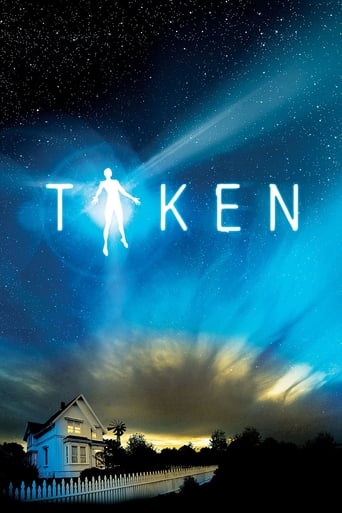
Taken
The show takes place from 1944 to 2002 and follows the lives of three families: the Crawfords, who seek to cover up the Roswell crash and the existence of aliens; the Keys, who are subject to frequent experimentation by the aliens; and the Clarkes, who sheltered one of the surviving aliens from the crash.
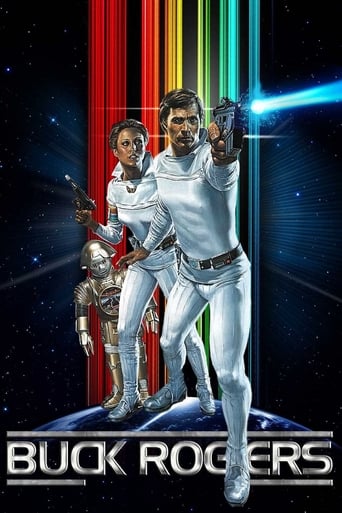
Buck Rogers in the 25th Century
20th-century astronaut Buck Rogers awakens in the 25th century after a freak accident puts him in suspended animation for 500 years. Upon returning to Earth and discovering the planet is recovering from a nuclear war, Buck uses his combat skills and ingenuity to protect Earth and fight evil throughout the galaxy alongside starfighter pilot Colonel Wilma Deering and robot companion Twiki.
Related
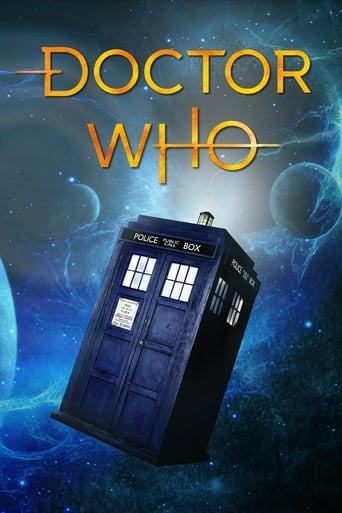
Max
Doctor Who
The Doctor is a Time Lord: a 900 year old alien with 2 hearts, part of a gifted civilization who mastered time travel. The Doctor saves planets for a living—more of a hobby actually, and the Doctor's very, very good at it.
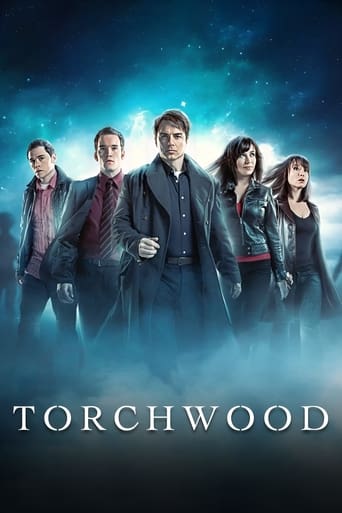
Max
Torchwood
The exploits a team of people whose job is to investigate the unusual, the strange and the extraterrestrial.

Disney+
The Falcon and the Winter Soldier
Following the events of “Avengers: Endgame”, the Falcon, Sam Wilson and the Winter Soldier, Bucky Barnes team up in a global adventure that tests their abilities, and their patience.
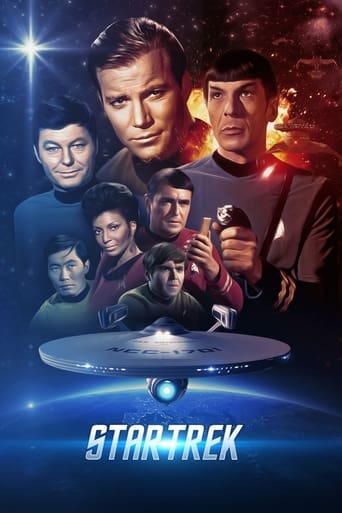
Prime Video
Star Trek
Space. The Final Frontier. The U.S.S. Enterprise embarks on a five year mission to explore the galaxy. The Enterprise is under the command of Captain James T. Kirk with First Officer Mr. Spock, from the planet Vulcan. With a determined crew, the Enterprise encounters Klingons, Romulans, time paradoxes, tribbles and genetic supermen led by Khan Noonian Singh. Their mission is to explore strange new worlds, to seek new life and new civilizations, and to boldly go where no man has gone before.
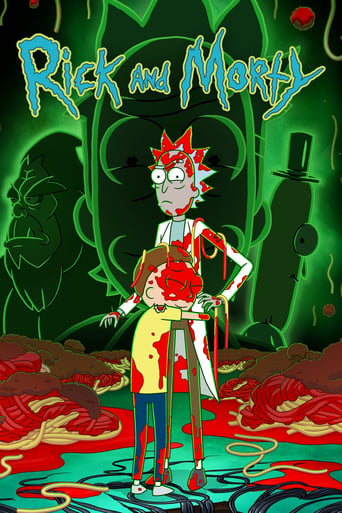
HULU
Rick and Morty
Rick is a mentally-unbalanced but scientifically gifted old man who has recently reconnected with his family. He spends most of his time involving his young grandson Morty in dangerous, outlandish adventures throughout space and alternate universes. Compounded with Morty's already unstable family life, these events cause Morty much distress at home and school.

HULU
The Good Doctor
Shaun Murphy, a young surgeon with autism and savant syndrome, relocates from a quiet country life to join a prestigious hospital's surgical unit. Unable to personally connect with those around him, Shaun uses his extraordinary medical gifts to save lives and challenge the skepticism of his colleagues.

AMC+
The Walking Dead
Sheriff's deputy Rick Grimes awakens from a coma to find a post-apocalyptic world dominated by flesh-eating zombies. He sets out to find his family and encounters many other survivors along the way.
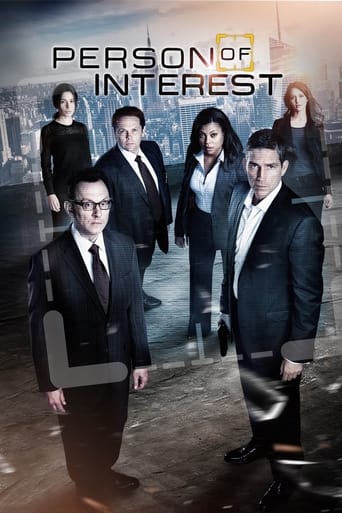
Max
Person of Interest
John Reese, former CIA paramilitary operative, is presumed dead and teams up with reclusive billionaire Finch to prevent violent crimes in New York City by initiating their own type of justice. With the special training that Reese has had in Covert Operations and Finch's genius software inventing mind, the two are a perfect match for the job that they have to complete. With the help of surveillance equipment, they work "outside the law" and get the right criminal behind bars.
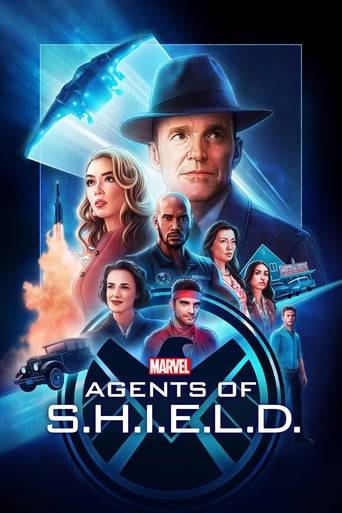
Netflix
Marvel's Agents of S.H.I.E.L.D.
Agent Phil Coulson of S.H.I.E.L.D. (Strategic Homeland Intervention, Enforcement and Logistics Division) puts together a team of agents to investigate the new, the strange and the unknown around the globe, protecting the ordinary from the extraordinary.

Two and a Half Men
A hedonistic jingle writer's free-wheeling life comes to an abrupt halt when his brother and 10-year-old nephew move into his beach-front house.
Top Streaming TV Show
#1

Grey's Anatomy
March. 27,2005
7.6
#2

A Teacher
November. 10,2020
6.9
#3
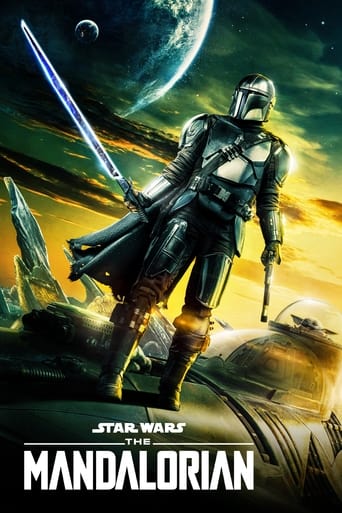
The Mandalorian
November. 12,2019
8.7
#4

Station 19
March. 22,2018
7
#5

Game of Thrones
April. 17,2011
9.2
#6
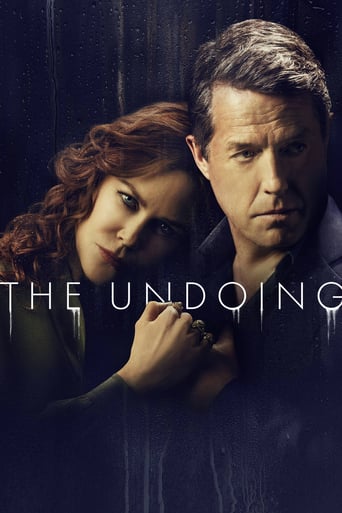
The Undoing
October. 25,2020
7.4
#7
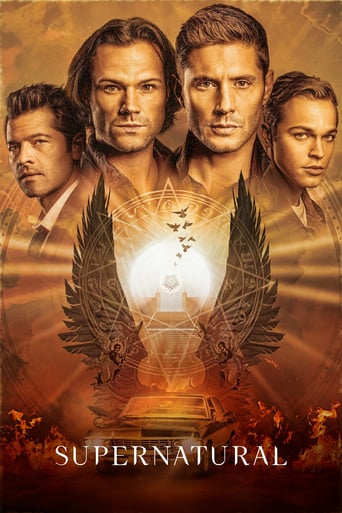
Supernatural
September. 13,2005
8.4
#8

The Last Dance
April. 19,2020
9.1
#9

Euphoria
June. 16,2019
8.3
#10
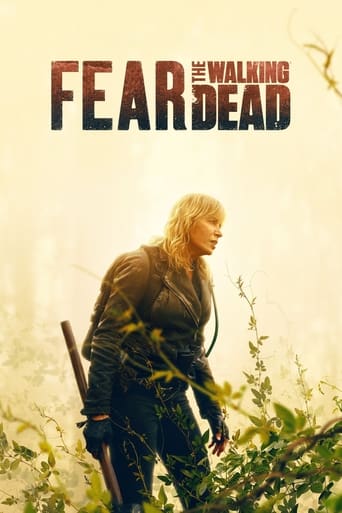
Fear the Walking Dead
August. 23,2015
6.8




